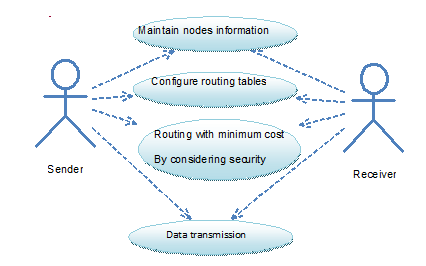Unified modelling language:
UML is a language for graphical representation, to visualize, construct, specify then document the artifacts of software development process. It is a standard specification to achieve the blue print for Dynamic Routing project which includes conceptual process like business process and system functions. Even it also depicts the data base schema specifications and language statements and software components which are reusable.
Unified modelings have some methods and procedures which makes the designing patterns without any difficulty. It defines the semantics as follows:
User interactions (use case model): it is model which describes interactions among the users and system environment to required models
Interactions model (communication model): it is a model which describes about the interactions of objects that are there in the model to perform a task or work done.
State model (dynamic model): it is a model which defines states of classes with conditions. Graphs in this view will shows the work flow of modules which is useful for project implementation.
Logical model (class model): it is model which describes about classes and objects in the system environment.
Physical model (component model): it is a model which describes software components and hardware components that are used for the project development.
Deployment model: it is the model which describes the physical architecture and deployment process with the hardware of system that is used for project development.
Use case diagram:
In my Dynamic Routing with stegnography project, I consider the basic actors as clients which help to design the use cases efficiently. The major task of the project is data transmission for that I need to consider the sender and destinations. Here two actors are placed at different ends, the process which consists the use cases are maintain the node information, configure routing tables, security consideration, dynamic routing, distance vector consideration and data transmission process. Here both the actors are interact with the all the use cases in the system, because sender and destination ends are interacting by sharing the information of nodes. Even both the actors are containing the routing table information by maintain the hop count which will help for the route establishment.
Here security consideration also perform with the both the actors, I am proposing the system to use the stegnography as the main technique which can be achieve through the mutual understand of the both the terminals.
| Name of the Use case | Transmission of data by considering two terminals |
| Actors Participation | sender |
| Flow of events | Sender sends the data into network, which will transmit over network by applying dynamic routing with security using stegnography technique. |
| Name of the Use case | Achieve dynamic routing strategy |
| Actors Participation | Receiver |
| Flow of events | At the destination end data should be clustered which will get through different routes and make it as original data. |
This Paper is written & submitted by Chandu.

